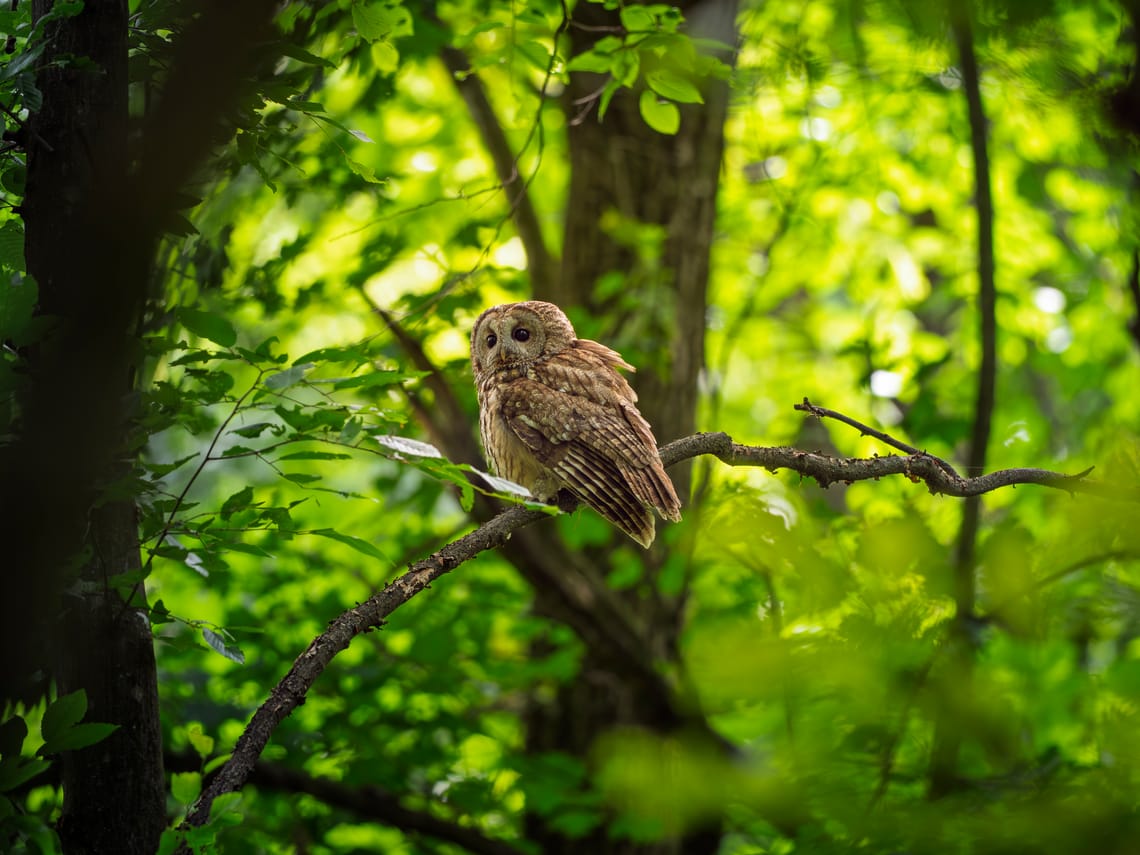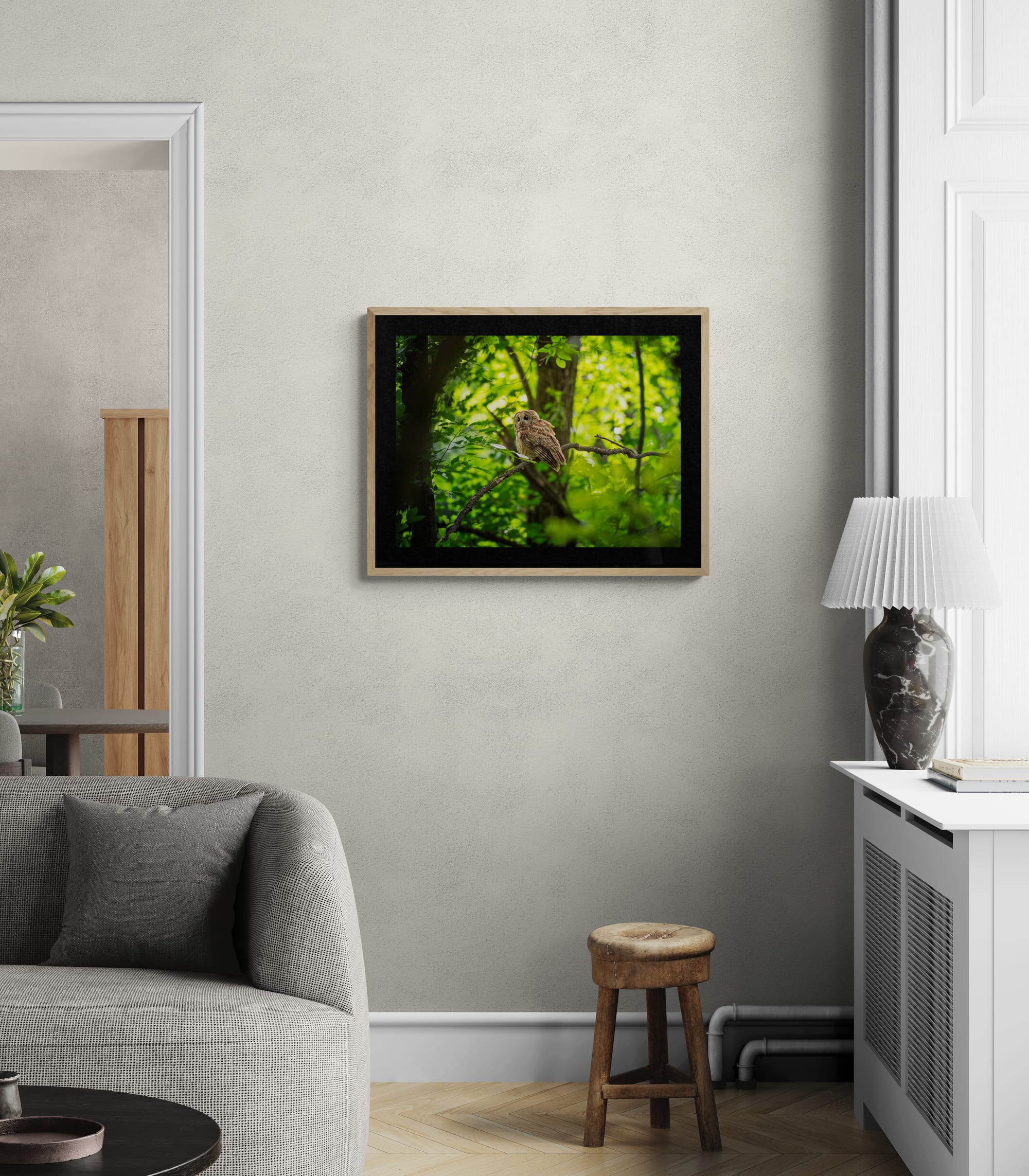
The story behind the photo

Feeling watched in the forest, in the middle of the day, is a strange feeling. When I finally found the source of that prickling awareness, two ancient eyes met mine—a tawny owl reminding me that in the deep woods, we are always the observed, never the observer.
Deep in the Romanian forest, surrounded by the gentle sounds of a summer afternoon—rustling leaves, distant birdsong, the soft whisper of wind through branches—I felt it. That primitive awareness that raises neck hairs and quickens heartbeat. The unmistakable sensation of being watched.
For twenty minutes, I'd been moving quietly through the woodland, photographing wildflowers and documenting the rich understory life. But gradually, that feeling grew stronger. Eyes. Somewhere in the green cathedral around me, predator eyes were tracking my every movement with the kind of intensity that has kept prey animals alive for millions of years.
This is one of humanity's oldest experiences—the sudden realization that we're not alone, that something wild and watchful has been observing us long before we became aware of its presence. In our modern world, we rarely experience genuine wildness, but forests still hold that power to remind us of our place in the natural order.
The feeling was so strong I stopped moving entirely, standing motionless among the trees, scanning the canopy systematically. Somewhere in that maze of branches and leaves, patient eyes were studying me with the kind of focus that only comes from being a supreme predator in your own domain.
Then I saw it—or rather, them. Two pale brown discs that seemed to materialize from the forest itself, as if the tree had suddenly grown eyes. A tawny owl, perfectly camouflaged against bark and shadow, perched motionless on a horizontal branch about fifteen meters away.
How long had it been watching? Minutes? An hour? Owls have this supernatural ability to appear and disappear, to exist in plain sight while remaining invisible until they choose to be seen. This individual had probably been observing my clumsy human progress through its territory from the moment I entered the forest.
Finding an owl active during broad daylight always feels like discovering a secret. These are creatures of shadow and darkness, masters of the night hunt, rarely seen by day unless disturbed or protecting young. But here was this tawny owl, fully alert and clearly comfortable in the dappled forest light.
I felt privileged to be studied by those ancient eyes. Tawny owls have inhabited European forests since before humans walked upright. This individual carried millions of years of predatory wisdom, genetic memory of countless nights hunting through darkness that would leave me helpless and lost.
This photograph captures more than just a well-camouflaged owl—it documents the humbling experience of being truly seen by wildness. In our human-dominated world, we're accustomed to being the observers, the dominant presence, the ones who choose when and how to engage with nature.
But in deep forests, ancient hierarchies still function. Here, we become the observed, the assessed, the tolerated visitors in a domain that operates by rules far older than human civilization. The owl's calm gaze reminds us that genuine wildness doesn't perform for us—it simply allows us to witness it, briefly, on its own terms.
